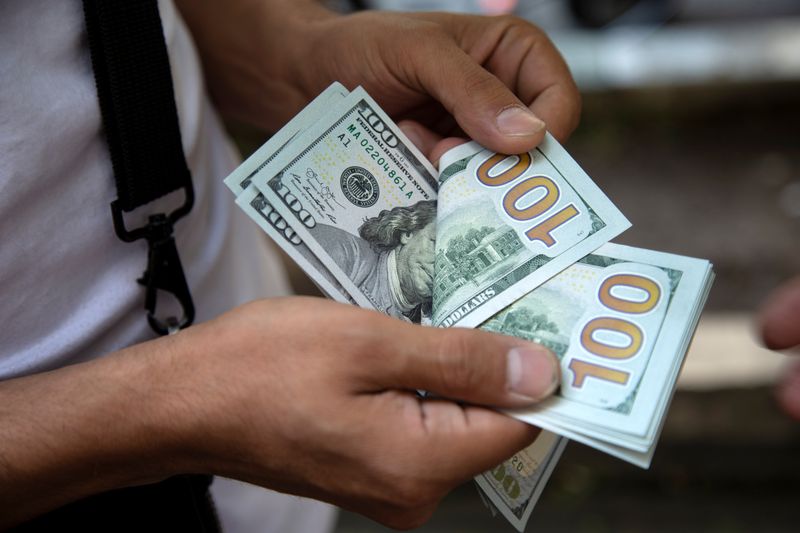 © Reuters
© Reuters
By Yasin Ebrahim
Investing.com -- The dollar extended its losses Thursday from a day earlier, but the pain isn't expected to last very long because wobbles in the global economy and a Federal Reserve leaning more hawkish will push investors into the safe arms of the greenback.
The U.S. dollar index, which measures the greenback against a trade-weighted basket of six major currencies, fell by 1.2% to 103.64
The dollar has been supported by a double helping of Fed hawkishness and a wobble in the global economy. But there aren't signs that either of these conditions are shaping up for a reversal, likely signaling the dollar has further to run.
"Our FX strategists expect the USD to remain strong; neither a dovish pivot nor a marked improvement in global growth expectations appears likely in the near term," Morgan Stanley said in a note.
The Fed raised rates by 0.75% on Wednesday, and set a course for a far more steeper path of rate hikes. The central bank now expects to rise rates by another 1.5%, or 150 basis points, to about 3.4% by year-end. That was far steeper than the Fed's prior projections in March, when it saw rates moving to about 1.9% by the end of the year.
Fed Chairman Jerome Powell conceded that the central bank's hand was twisted into larger than expected hike by inflation data that surprised to the upside. Some on Wall Street believe the Powell hasn't yet got a grip on how much longer inflation is likely to run hot.
“Bottom line is the Fed still believes core inflation is largely temporary,” Morgan Stanley said, pointing to the Fed’s forecast for core inflation to peak at 4.3% this year, and eventually drop to under 3% next year.
If the Fed finds itself staring down the barrel of an inflation surprise once again, then it will be forced to extend its forecast on how much further rates will need to move before peaking, the so-called terminal rate, to bring down inflation.
The central bank currently expects to put its rate hike tool back into the monetary policy toolbox when its benchmark rate reaches 3.5% to 4.5%. If inflation, however, continues to run at above 8% for the rest of the year, as some market participants expect, then the Fed may be forced to raise its terminal rate to 4.5% to 5%.
A longer-than-expected journey to peak rates will prolong the dollar's gallivant higher at a time when deteriorating global growth expectations, Morgan Stanley says, is also proving fertile breeding ground for dollar bids. "A reduction in investor growth expectations may strengthen USD by impacting risk appetite."

